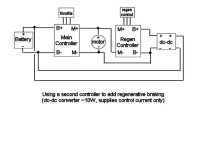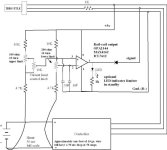safe
1 GW
- Joined
- Dec 22, 2006
- Messages
- 5,681
In order to prevent Xyster from "spamming" my threads with solicitations for me to look at this circuit I've come here to offer my blessings and to confirm that I've seen it.
Yes, it's possible to toggle between high voltage / low amps verses lower voltage / higher amps and it does work. I've read of dragsters that do this.
Hmmmmm... remember the "battery throttle" concept?
What if you could rearrainge the way you assembled things to incorporate this amperage issue?
Maybe all the subpacks are always in use, but the configuration is changed in order to create a kind of throttle?
With 3.6 Volt increments it's possible... Hmmmmm....
3.6
7.2
14.4
28.8
57.6
So a throttle of five increments? (a logic of doubling voltage)
Yes, it's possible to toggle between high voltage / low amps verses lower voltage / higher amps and it does work. I've read of dragsters that do this.
Hmmmmm... remember the "battery throttle" concept?
What if you could rearrainge the way you assembled things to incorporate this amperage issue?
Maybe all the subpacks are always in use, but the configuration is changed in order to create a kind of throttle?
With 3.6 Volt increments it's possible... Hmmmmm....
3.6
7.2
14.4
28.8
57.6
So a throttle of five increments? (a logic of doubling voltage)




